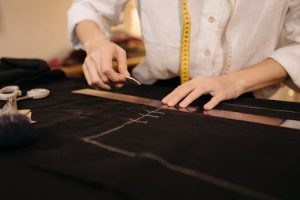Regenerative Fabrics: How Farming Practices Are Healing the Planet
Farming practices have a major impact on the health of the planet. In recent years, the detrimental effects of conventional farming methods have become increasingly apparent – from soil degradation to water pollution and loss of biodiversity. However, a new movement in agriculture known as regenerative farming is gaining momentum and offering a solution to such environmental problems. But one aspect that often goes unnoticed is the use of regenerative fabrics in this practice.
What Are Regenerative Fabrics?
Regenerative fabrics are agricultural products, such as cotton, wool, and hemp, that are grown using regenerative farming techniques. These methods focus on improving the soil health and ecosystem, rather than solely maximizing yield. This results in healthier and more resilient crops, as well as a healthier planet.
The Problem with Conventional Farming Practices
To fully understand the impact of regenerative fabrics, it is important to first recognize the issues with conventional farming practices. The majority of modern farming methods rely heavily on the use of synthetic fertilizers and pesticides, which can harm the soil and surrounding environment. These chemicals can seep into the ground, contaminating water sources and disrupting delicate ecosystems. In addition, conventional farming often involves monoculture, the practice of growing a single crop in a large area. This leads to a loss of biodiversity and can cause soil erosion.
How Regenerative Farming Works
Regenerative farming techniques take a holistic approach to agriculture, focusing on the entire ecosystem rather than just crop production. These methods include practices such as rotational grazing, cover cropping, and minimal tilling. By rotating crops, farmers can improve soil health and prevent erosion, while also reducing the need for synthetic fertilizers and pesticides. Cover cropping helps to protect the soil from harsh weather conditions and adds nutrients back into the soil. And minimal tilling, or no-till farming, allows beneficial organisms to thrive in the soil while holding onto carbon and preventing erosion.
The Benefits of Regenerative Fabrics
The use of regenerative fabrics in fashion and textiles has a number of benefits, both for the environment and for consumers. Since these fabrics are made from crops that are grown using regenerative farming methods, they are free from harmful chemicals. This means that not only are they safer for consumers to wear, but also for the farmers who grow them and the surrounding environment.
Additionally, regenerative fabrics have a lower carbon footprint compared to conventional fabrics. This is because the farming methods used to grow them help to sequester carbon back into the soil, reducing the amount of greenhouse gases released into the atmosphere. In fact, a study by the Rodale Institute found that if regenerative farming practices were adopted globally, it could offset more than 100% of current greenhouse gas emissions.
Leading the Way to a Healthier Planet
Today, many sustainable fashion brands are embracing regenerative fabrics as a way to minimize their environmental impact. Companies like Patagonia, EILEEN FISHER, and REI are sourcing their fabrics from regenerative farms and promoting the importance of these practices to their customers. This trend is also being seen in the home decor industry, with companies like Coyuchi, Boll & Branch, and West Elm offering regenerative fabric options.
Creating a More Sustainable Future
The use of regenerative fabrics not only benefits the environment, but also has the potential to transform the fashion and textile industries. By supporting regenerative farming practices, we can create a more sustainable future for our planet. So let’s continue to spread the word and make conscious choices when it comes to the fabrics we wear and use in our homes.
In Conclusion
Regenerative farming practices have the power to heal our planet, and regenerative fabrics are playing an important role in this movement. By supporting ethical and sustainable fashion brands that use these fabrics, we can all contribute to a more sustainable future for generations to come. Let’s embrace the power of regenerative farming and create positive change for both the environment and our communities.








